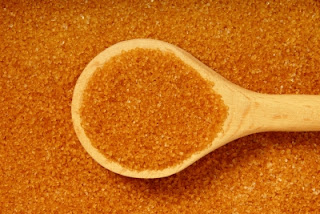You probably know by now that I love kale. You might wonder why I'm talking about it so much lately--and no, it's not because I'm obsessed. Kale is a cool-weather vegetable, so it's seasonal (and trendy) right now, and the perfect hearty green for wintertime. Not only do I love the taste, but I also love the nutritional benefits and the price tag.
One cup of kale contains only 36 calories and a whopping 5 grams of fiber--great for intestinal health and lowering cholesterol. Kale's health benefits are also linked to its high concentration of antioxidant vitamins (180% the daily requirement of vitamin A, 200% of vitamin C and 1,020% of vitamin K). It is a natural source of calcium, meeting 15% of the daily requirement, and contains 40% the daily value of magnesium; these two nutrients play a vital role in bone health. Kale is also a good source of the minerals copper, potassium, iron, manganese and phosphorus. And yet more; kale is rich in carotenoids and flavonoids, the specific types of antioxidants associated with anti-cancer properties and eye health.
Here's another perk: it costs 99 cents or less per bunch, which will serve 2 to 4 people. Do you need any other reasons to give it a try?
One cup of kale contains only 36 calories and a whopping 5 grams of fiber--great for intestinal health and lowering cholesterol. Kale's health benefits are also linked to its high concentration of antioxidant vitamins (180% the daily requirement of vitamin A, 200% of vitamin C and 1,020% of vitamin K). It is a natural source of calcium, meeting 15% of the daily requirement, and contains 40% the daily value of magnesium; these two nutrients play a vital role in bone health. Kale is also a good source of the minerals copper, potassium, iron, manganese and phosphorus. And yet more; kale is rich in carotenoids and flavonoids, the specific types of antioxidants associated with anti-cancer properties and eye health.
Here's another perk: it costs 99 cents or less per bunch, which will serve 2 to 4 people. Do you need any other reasons to give it a try?
One of the easiest ways to use kale is in soup. Since kale does have a slightly bitter taste, this is a great way to allow your taste buds to adjust to it too. It's always good to try something new and vegetables are always a worthwhile choice. If you don't like it right off the bat, don't worry. You might have to try a new food ten times before developing a preference for it!
This recipe is specifically for those days when you don't feel like cooking (or want a quick, warm lunch). It's basically heat and eat (kind of like shake and bake--ha ha). And so easy that it hardly requires a recipe, just some instructions.
This recipe is specifically for those days when you don't feel like cooking (or want a quick, warm lunch). It's basically heat and eat (kind of like shake and bake--ha ha). And so easy that it hardly requires a recipe, just some instructions.
You can prepare this soup in the microwave or on the stovetop. I use the microwave. Hey--that's just one less dish to wash.
Ingredients (per bowl)
- 1-2 cups low-sodium tomato soup (I like Trader Joe's Organic Low-Sodium Creamy Tomato)
- 2 big handfuls of kale, torn
- 1 tablespoon grated Parmesan cheese
- 6 croutons (I like Fresh Gourmet Parmesan Caeser--they are super flavorful!)
Instructions
- Pour soup into microwave-safe bowl (or pot).
- Top with torn kale.
- Microwave for 2-3 minutes, or until hot, stirring halfway through cook time as the kale begins to wilt.
- Top with Parmesan cheese and croutons.
It starts like this, so don't be afraid to pile on that kale:
And ends like this:
Talk about comfort food. Yummy in my tummy. Enjoy!
Related Posts:
#7 of 12 Food to Eat More of in 2012
Kale Chips
Stuffed Shells with Kale


























